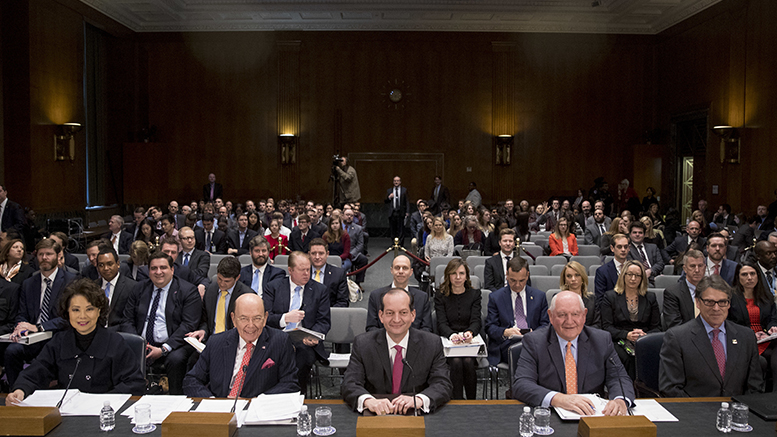As the Trump administration pushes ahead with its $1.5 trillion plan to modernize the nation’s infrastructure, U.S. Labor Secretary Alexander Acosta on Wednesday outlined the workforce development components of the plan, which include allowing students to use Pell grants for quality short-term programs that are focused on in-demand fields.
In a rare hearing that included five cabinet secretaries, the Senate Commerce, Science and Transportation Committee focused on the policy aspects of the president’s plan to update the nation’s roads, bridges, tunnels and airports and more, with Acosta addressing workforce development.
During the hearing — which covered a broad range of issues, from wages and workplace safety, to tariffs and consumer protections, to permits and paying for the plan — Acosta reemphasized the pitch to expand Pell to short-term programs.
“High-quality programs that can prepare Americans for in-demand occupations in a shorter time frame deserve the same treatment as traditional educational options,” said Acosta, who cited a visit last year to Truckee Meadows Community College (Nevada) where he toured the college’s HVAC certification program and met students in the program.
The Pell proposal, which is supported by the American Association of Community Colleges (AACC), is included in a House bill to reauthorize the Higher Education Act and has garnered support in the Senate, which has yet to release its HEA bill.
‘Common sense’ approach
The president’s plan has a “common sense” approach built on four workforce development goals:
- extending Pell eligibility to short-term programs
- opening Federal Work-Study grants more to community college students
- focusing Perkins Career and Technical Education Program grants more on high schools
- providing more intrastate flexibility in occupational licensing
Acosta cited AACC data highlighting that nearly a quarter of credentials awarded by U.S. community colleges in 2014 and 2015 were certificates of less than one year.
“Current Pell Grant eligibility overlooks the growing importance of postsecondary, short-term credentials to the career entry and advancement of many Americans, including those infrastructure-related occupations,” Acosta said.
In addition, the president’s plan would revamp the funding formula to send Work-Study funds to schools with a “strong record” of enrolling Pell Grant students, particularly those pursing career and technical education, the secretary said.
“Work-Study funds are disproportionately distributed to four-year colleges and universities, disadvantaging quality community colleges and other programs that are more focused on workplace readiness,” Acosta said.
In regards to Perkins CTE, the proposal would plan more emphasis on earn-and-learn programs, such as apprenticeships and work-based learning, and dual-enrollment programs to provide hands-on, technical experience, especially in STEM fields, according to the secretary.
The secretary also recommended reforming state licensing requirements, some of which prevent workers from working in other states.
“I have engaged with state and local officials and offered this advice: if licenses are unnecessary, eliminate them. If licenses are necessary, streamline and make them reciprocal with other states,” he said.

